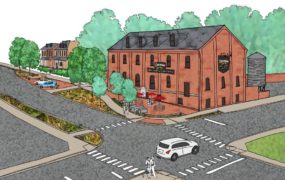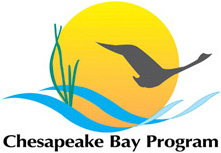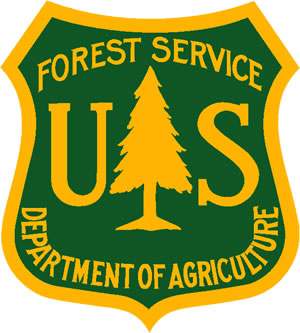by Ryan Davis, Alliance for the Chesapeake Bay
In the summer of 2018, the Pennsylvania Phase III WIP (Watershed Implementation Plan) Forestry Workgroup was getting close to finishing up our recommendations for how the Commonwealth could meet its Chesapeake Bay pollution reduction goals. We had spent much of a year working closely with the Agriculture Workgroup to chart a path towards massive riparian forest buffer coverage expansion, and arrived at a goal which was bold yet reasonable, where forested streams would be a key tool for reducing PA’s sediment and nutrient impacts on the Chesapeake Bay.
As we turned to the stormwater sector, we anticipated that trees would play a large role again, but were a bit blindsided by how difficult it is to accomplish appreciable change with any Best Management Practice (BMP) in urbanized areas. Unlike on farms, there isn’t much open riparian space to reforest. There also isn’t much potential for stormwater to infiltrate into the ground before it reaches streams in a landscape that is predominantly covered by streets, roofs, and lawns- which only have small infiltration potential of about 1 inch of rain in an hour on average. Street trees and urban riparian forest buffers were going to be a large part of the stormwater solution, but we had to think “outside of the tree well” to meet our goals.

That’s when our attention turned to the lawn itself. The urban forest planting BMP, which simply entailed planting trees somewhat densely (at least 200 per acre) and ceasing lawn mowing beneath the trees after establishment, could achieve impressive numbers relative to other stormwater practices, at a fraction of the cost. When we think of cities, we often think of row houses and tiny yards. However, when we use the word “urban” in the Chesapeake Bay stormwater world, it means essentially anything that isn’t cultivated or natural lands. The 50-acre middle school, church, warehouse, or corporate campus that is entirely paved, built on, or mowed counts as urban. So does a five-acre lawn surrounding a house in a suburban development.
Just as we started to see the roughly one million acres of lawn in the Chesapeake Bay watershed of Pennsylvania as a potential source of massive nutrient and sediment reductions, the conservation landscaping BMP was approved as a practice that could be included in the Phase III WIP. Conservation landscaping is simply the practice of replacing lawn cover with native wildflowers and grasses, something that many homeowners already do to provide backyard interest and pollinator habitat while helping slow stormwater flow and increase infiltration.
With this sea of lawn on the brain, the Forestry Workgroup saw much more potential in the newly approved conservation landscaping practice. Though us forest enthusiasts would love for much of that lawn to revert to woods, the practical implications in developed areas complicates things. Some businesses love the idea of an urban forest, but need their building and sign to be visible to potential clients passing by. Forest cover abutting a building could pose a (low, albeit present) threat of future structural damage. Buried and aboveground utilities criss-cross our communities, eliminating those areas as potential. So what if, in addition to having a huge urban forest planting goal, we had an equally large conservation landscaping target? Thus, the seeds of the Pennsylvania Lawn Conversion Program were planted.
Pennsylvania’s goal became converting just 1% of its lawn cover in the Chesapeake Bay watershed. It doesn’t sound like much, but comes out to a whopping 10,000 acres. Half is to be converted to forests via the urban forest planting BMP and half to native meadows via the conservation landscaping BMP. The Pennsylvania Department of Conservation and Natural Resources (DCNR) volunteered to lead the charge. Their small but mighty riparian forest buffer team housed in the Bureau of Forestry had made great strides in supporting and accelerating riparian forest buffer implementation on private lands, and was poised to kick-start the adoption of these new reforestation initiatives as well.
Funding for demonstration projects, the creation of an outreach hub and the resources to fill it, and the formation of the PA Lawn Conversion Advisory Committee came into play at the beginning of 2020 thanks to DCNR and the National Fish and Wildlife Foundation, via a grant attained by the Alliance for the Chesapeake Bay. Subsequent funding from the USDA Forest Service helped expand the acreage planted. The nascent lawn conversion community was pleasantly surprised to receive an immediate and lasting outpouring of support and interest from professionals and the public alike. It turns out that the forestry community was not alone in wishing that we could trade some lawn cover for natural lands. Public awareness of our modern conservation dilemmas is rising; the general public is increasingly up to speed about our dire need to protect water, support pollinator populations, cool our communities with tree canopies, and sequester. And the Pennsylvania Lawn Conversion Program is now in place to help.
We are proud to note that, against all odds, in 2020 Pennsylvania was able to fund 45-acres of lawn conversions. These early projects, many of which were on public and semi-public property, will serve as demonstration sites for years to come. Thousands of acres of progress still must be made, but given sufficient funding, the process will be relatively easy. Ample Pennsylvanians are already on board, so we do not have the same decades-long battle for awareness that we did (and often still do) when pushing towards riparian forest buffer goals.
It will almost certainly take longer than the 2025 target for converting 10,000 acres of lawn to woods and meadows, but we will eventually get there. And when we do, more residents in suburbs and cities will be enveloped in forests and natural spaces. More children will grow up playing in woods and meadows that were once nothing but mowed lawns around their libraries, churches, schools, and parks. More communities will have access to nature, and to sweet shade that punctures the brutal temperatures of summer heatwaves. Over time, perhaps functioning ecosystems will be regarded as a welcome and requisite member of urban life. Penn’s Woods will slowly nudge closer to its namesake status as impressively forested. Pennsylvania’s Lawn Conversion Program is a strong step towards this dream.





